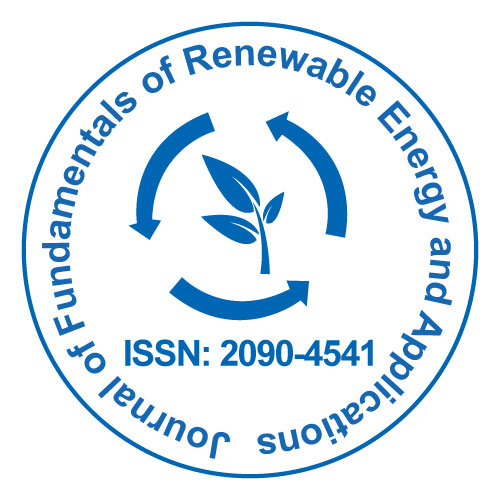
Journal of Fundamentals of Renewable Energy and Applications
Acesso livre
ISSN: 2090-4541

ISSN: 2090-4541
Mariam Al hattab and Abdel Ghaly
Microalgae biomass can be used to produce numerous value added products such as biodiesel, bioethanol, biogas, biohydrogen, fish feed, animal feed, human food supplements and skin care products. Production of value added products from microalgae biomass requires the growth and recovery of the algae biomass, extraction and downstream processing of the desired product. One of the major obstacles for using microalgae biomass on an industrial-scale, for the production of biodiesel, is the high processing costs. Increasing the lipid recovery efficiency from the microalgae biomass would result in greater product yields (biodiesel). Thus, the aim of this study was to review the current methods used for microalgae pre-treatment and perform a comparative analysis in order to determine the most economically efficient method for large scale use. The effectiveness of the pre-treatment methods investigated was evaluated based on: (a) cell wall disruption efficiency, (b) cost, (c) toxicity (d) suitability for large scale use, (e) time, (f) reusability and (g) maintenance. Different treatment methods included mechanical techniques (shaking vessel and agitated bead mills and horn and bath sonication), thermal methods (steam explosion, freeze drying and autoclave), electromagnetic radiation (microwave) and biological treatments (enzymatic). The results indicated that of the 9 microalgae methods investigated a mechanical, thermal and electromagnetic radiation techniques were suitable. These methods were bath sonication (81), steam explosion (93) and microwave radiation (87). Microwave assisted microalgae pre-treatment technique is rapid, effective in cell wall disruption, non-toxic, can be used for large volumes and the medium maybe reused, but it does however suffer from high maintenance costs. Bath sonication technique is effective in the degradation of cell wall, nontoxic, rapid technique with minimal maintenance required, but suffers from high costs and difficulty in scale up for industrial use. Steam explosion pre-treatment is effective in degrading microalgae cell wall, releasing intracellular components, rapid, reusable, relatively low in costs, environmentally friendly and reusable, but is species specific. Overall, the negative aspects of these three techniques are outweighed by their effectiveness, rapidness and relatively low costs when compared to other pre-treatment techniques. Other mechanical extraction methods suffer from high operational costs, lengthy treatment times, high maintenance costs and the scale up difficulty. Freeze drying and autoclave techniques were deemed unsuitable microalgae pre-treatment techniques because of the high costs, scale up difficulty and long processing times associated. Biological pre-treatment technique were deemed unsuitable as a result of high costs associated with purchasing of enzymes, difficulty in recovery/separation after treatment, long treatment time, and high maintenance required for high efficiency.